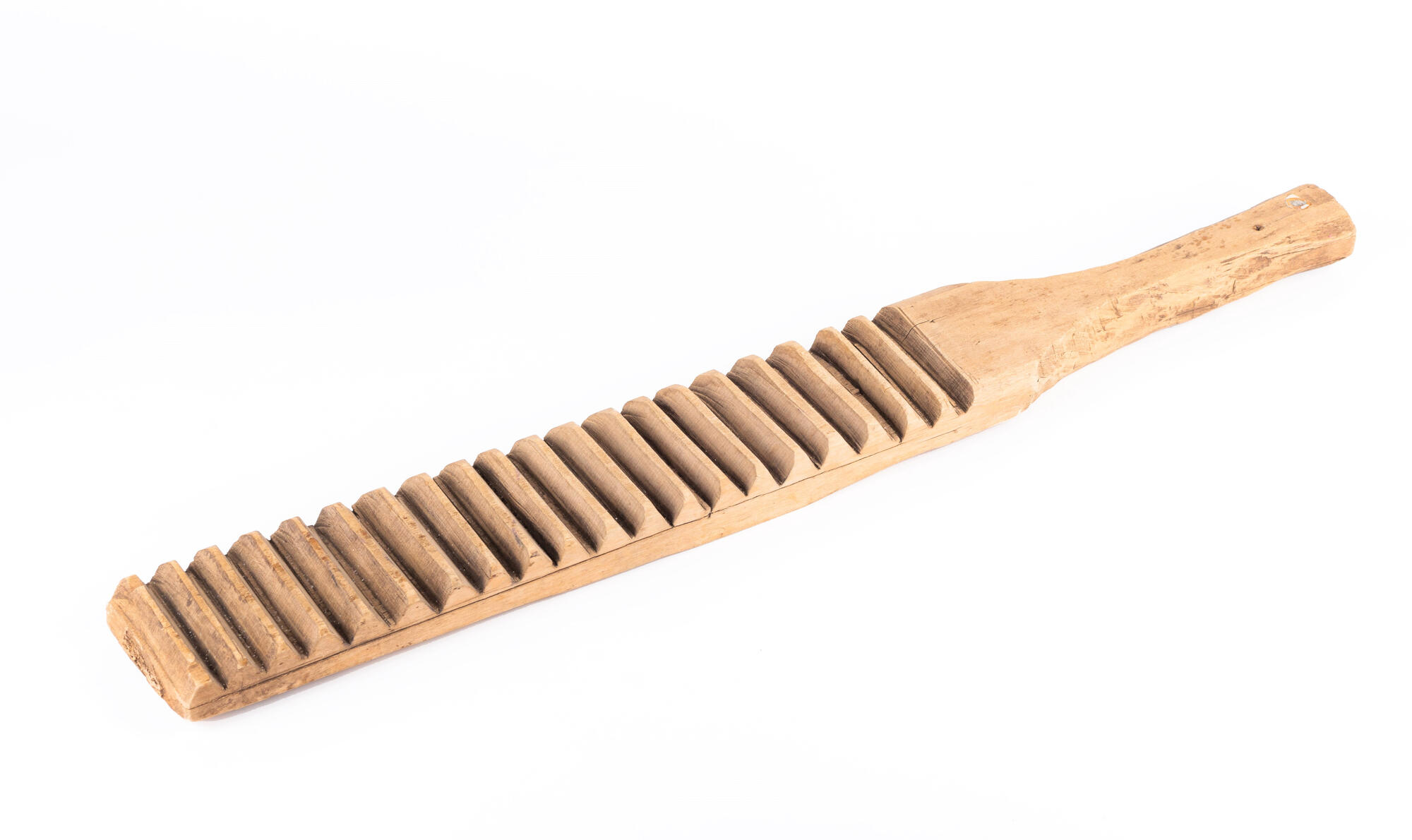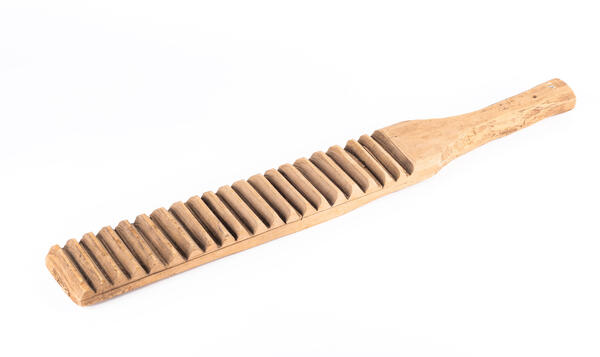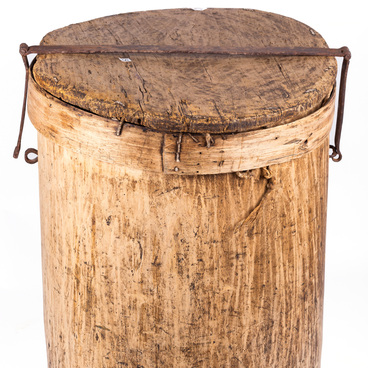People used to wash clothing by hand in special-purpose vessels: hollowed out basins. After clothing was washed and dried, it was ironed using a rubel. The rubel is a household item from ancient times, a wooden board with transverse grooves cut out to help roll out clothing. It could also be used to work over animal hides.
To iron the washed linens, the mistress of the house folded them lengthwise, trying to make sure they are the same width as the rolling pin. Then she wrapped the rolling pin with it, creating a tight bundle. She put the rubel on top of this bundle and rolled it forward, smoothing the fabric: this is how rolling the linens was accomplished. This process required that women put forth a certain amount of physical force. Even poorly washed linen, after rolling it out, became snow-white, as if all the ‘juice’ had been squeezed out of it. That is how the famous Russian proverb originated: ‘If not by washing, then by rolling’.
Most often, the rubel took the form of a board made of hard deciduous wood - oak, mountain ash, beech, maple, or birch — with a handle at one end. The rubel was made by giving the wood the desired shape and then, at one end, attaching a handle. The outer side of the rubel was cut to make transverse, rounded ridges, while the inner part remained flat. Some craftsmen decorated the inside of the board with exquisite carvings. The shape of the rubel and its ornamentation could change significantly, depending on the region.
Sometimes boards from wood waste were used in this work, processing them manually or machining them. The ends of the boards for the rubel were cut down as smoothly as possible, and the corners along the edges were rounded off with a file. A comfortable, ergonomic handle was also cut from the same semi-finished product.
One very important stage was cutting the rollers on the lower surface of the rubel: every 15 mm parallel strips were drawn, and the notches made along them amounted to about 7 mm of that. The finished notches were turned into grooves between the rollers by using a chisel. The wood was cut with a sloped cutting tool in the direction of the notch. Chisels were used to smooth the sharper edges, making them more rounded. The surface of the edges was made smooth with sandpaper.
To iron the washed linens, the mistress of the house folded them lengthwise, trying to make sure they are the same width as the rolling pin. Then she wrapped the rolling pin with it, creating a tight bundle. She put the rubel on top of this bundle and rolled it forward, smoothing the fabric: this is how rolling the linens was accomplished. This process required that women put forth a certain amount of physical force. Even poorly washed linen, after rolling it out, became snow-white, as if all the ‘juice’ had been squeezed out of it. That is how the famous Russian proverb originated: ‘If not by washing, then by rolling’.
Most often, the rubel took the form of a board made of hard deciduous wood - oak, mountain ash, beech, maple, or birch — with a handle at one end. The rubel was made by giving the wood the desired shape and then, at one end, attaching a handle. The outer side of the rubel was cut to make transverse, rounded ridges, while the inner part remained flat. Some craftsmen decorated the inside of the board with exquisite carvings. The shape of the rubel and its ornamentation could change significantly, depending on the region.
Sometimes boards from wood waste were used in this work, processing them manually or machining them. The ends of the boards for the rubel were cut down as smoothly as possible, and the corners along the edges were rounded off with a file. A comfortable, ergonomic handle was also cut from the same semi-finished product.
One very important stage was cutting the rollers on the lower surface of the rubel: every 15 mm parallel strips were drawn, and the notches made along them amounted to about 7 mm of that. The finished notches were turned into grooves between the rollers by using a chisel. The wood was cut with a sloped cutting tool in the direction of the notch. Chisels were used to smooth the sharper edges, making them more rounded. The surface of the edges was made smooth with sandpaper.



